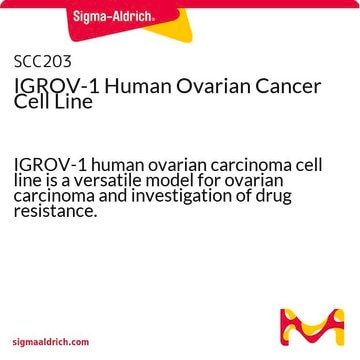EPI006
Histone Deacetylase 8 (HDAC8) Activity Assay Kit
100 assays in 96 well plates
Sign Into View Organizational & Contract Pricing
All Photos(1)
About This Item
Recommended Products
usage
100 assays in 96 well plates
NCBI accession no.
shipped in
wet ice
storage temp.
−20°C
Gene Information
human ... HDAC8(55869)
mouse ... HDAC8(70315)
General description
HDAC8 (histone deacetylase 8) is a class I enzyme, that has 377 residues and it lies between class I and class II HDACs. This gene is located on X chromosome. It consists of a single α/β domain, in which eight parallel stranded β sheets are sandwiched between 13 α helices.
Histone deacetylases (HDACs) are a large family of enzymes that remove acetyl groups from histone proteins. Site specific histone acetylation and deacetylation have been shown to activate or repress eukaryotic gene transcription, respectively, and as a consequence, it plays a crucial role in mammalian development and disease. HDACs are involved in important biological activities, such as cell differentiation, proliferation, apoptosis, and senescence.
With Sigma′s HDAC8 Activity Assay Kit, HDAC8 present in a test sample will act with the supplied Developer, to deacetylate and then cleave the HDAC8 Substrate (R-H-K(Ac)-K(Ac)-AFC). This activity will release the quenched fluorescent group, AFC, which can be detected at Em/Ex = 380/500 nm. Trichostatin A is an HDAC inhibitor included in the kit to verify HDAC8 activity. The kit provides a rapid, simple, sensitive, and reliable test. It is suitable for either individual tests or high throughput assays, from nuclear extracts, purified, or immunoprecipitated HDAC8, and from native, recombinant, or genetically modified HDAC8.
With Sigma′s HDAC8 Activity Assay Kit, HDAC8 present in a test sample will act with the supplied Developer, to deacetylate and then cleave the HDAC8 Substrate (R-H-K(Ac)-K(Ac)-AFC). This activity will release the quenched fluorescent group, AFC, which can be detected at Em/Ex = 380/500 nm. Trichostatin A is an HDAC inhibitor included in the kit to verify HDAC8 activity. The kit provides a rapid, simple, sensitive, and reliable test. It is suitable for either individual tests or high throughput assays, from nuclear extracts, purified, or immunoprecipitated HDAC8, and from native, recombinant, or genetically modified HDAC8.
Biochem/physiol Actions
HDAC8 (histone deacetylase 8), with the help of PKA (cyclic AMP-dependent protein kinase A) plays a major role in confirming the acetylation state of histones. This protein may also plays an important role in acute myeloid leukemia (AML). Suppression of HDAC8 by RNA interference stops the growth of lung, colon, and cervical cancer cell lines.
Features and Benefits
- Simple, sensitive, and reliable assay
- Utilizes fluorometric methods
- Sample type: cell and tissue lysates, plasma and serum, other biological fluids
- Species reactivity: mammalian
- Suitable for individual tests or high throughput assays and kinetic studies
- Suitable for high throughput measurement of HDAC8 activity in purified, immunoprecipitated, and recombinant or genetically modified HDAC8 samples
- Convenient 96-well microplate format
related product
Product No.
Description
Pricing
Storage Class Code
10 - Combustible liquids
WGK
WGK 3
Flash Point(F)
188.6 °F - closed cup
Flash Point(C)
87 °C - closed cup
Certificates of Analysis (COA)
Search for Certificates of Analysis (COA) by entering the products Lot/Batch Number. Lot and Batch Numbers can be found on a product’s label following the words ‘Lot’ or ‘Batch’.
Already Own This Product?
Find documentation for the products that you have recently purchased in the Document Library.
Crystal structure of a eukaryotic zinc-dependent histone deacetylase, human HDAC8, complexed with a hydroxamic acid inhibitor.
Vannini A, et al.
Proceedings of the National Academy of Sciences of the USA, 101(42), 15064-15069 (2004)
Structural snapshots of human HDAC8 provide insights into the class I histone deacetylases.
Somoza JR, et al.
Structure, 12(7), 1325-1334 (2004)
Li-Sophie Z Rathje et al.
Proceedings of the National Academy of Sciences of the United States of America, 111(4), 1515-1520 (2014-01-30)
Oncogenes deregulate fundamental cellular functions, which can lead to development of tumors, tumor-cell invasion, and metastasis. As the mechanical properties of cells govern cell motility, we hypothesized that oncogenes promote cell invasion by inducing cytoskeletal changes that increase cellular stiffness.
Hai-Ying Zhu et al.
Biochemical and biophysical research communications, 444(4), 638-643 (2014-02-05)
Interspecies somatic cell nuclear transfer (iSCNT) is a promising method to clone endangered animals from which oocytes are difficult to obtain. Monomeric red fluorescent protein 1 (mRFP1) is an excellent selection marker for transgenically modified cloned embryos during somatic cell
Johannes Gräff et al.
Cell, 156(1-2), 261-276 (2014-01-21)
Traumatic events generate some of the most enduring forms of memories. Despite the elevated lifetime prevalence of anxiety disorders, effective strategies to attenuate long-term traumatic memories are scarce. The most efficacious treatments to diminish recent (i.e., day-old) traumata capitalize on memory updating
Our team of scientists has experience in all areas of research including Life Science, Material Science, Chemical Synthesis, Chromatography, Analytical and many others.
Contact Technical Service







